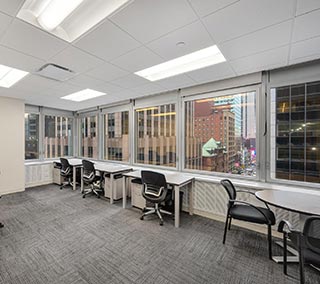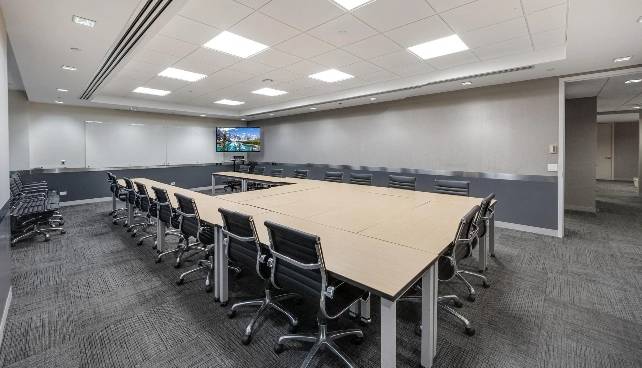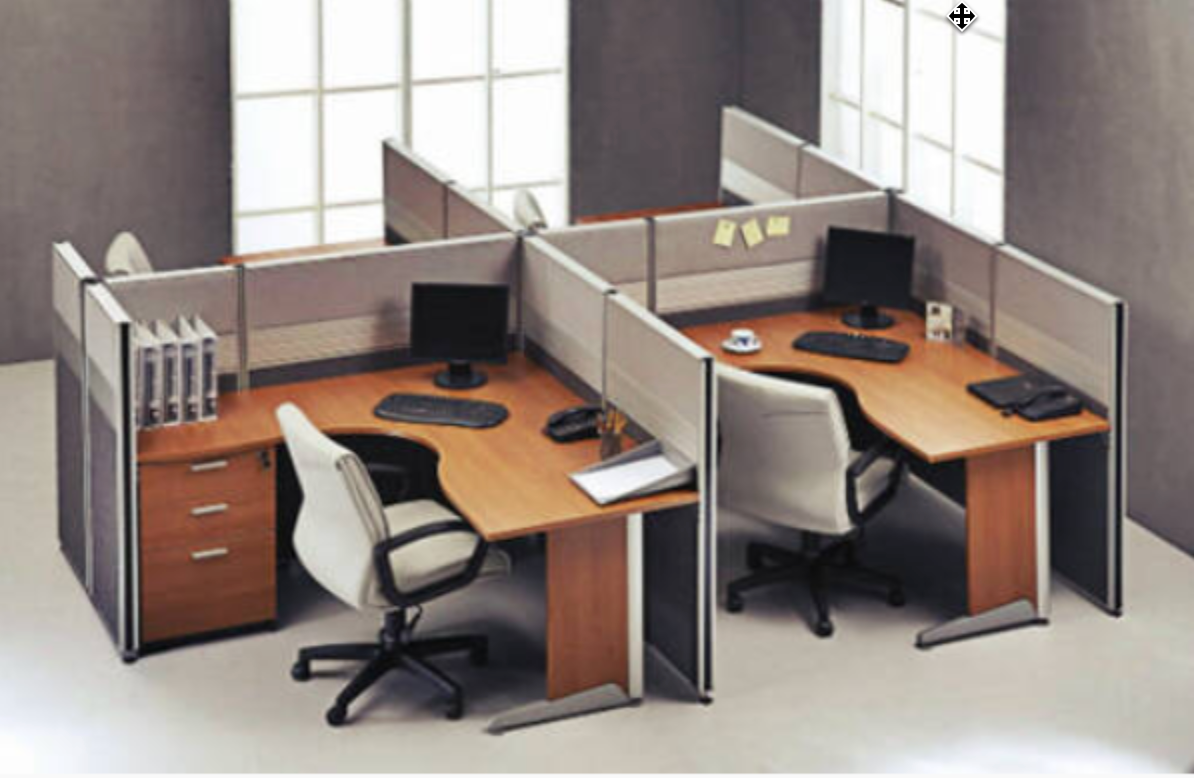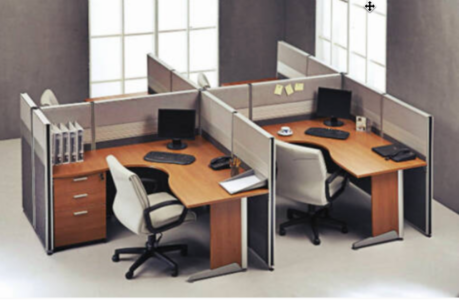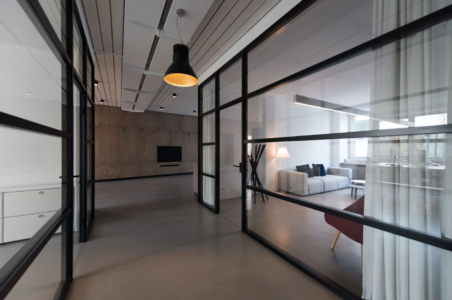A cellular office layout is a floor plan in which employees are arranged in small groups or cells facing each other. This layout is often used in open office spaces to encourage collaboration and communication.
Employees in a cellular office layout can typically work more independently than those in a traditional office layout.
Most people are familiar with the traditional office layout-employees work in rows of cubicles, with each person facing a wall. Cellular office layouts are becoming more popular, offering several benefits over conventional designs. In this article, we will explore a cellular office layout and discuss some of its benefits.
The Basics of a Cellular Office Layout
A cellular office layout is a floor plan in which employees are arranged in small groups or cells facing each other. This layout is often used in open office spaces to encourage collaboration and communication.
(source)
How do cell offices affect productivity?
In a traditional office layout, employees are often arranged in rows of cubicles, with each person facing a wall. This can create a feeling of isolation and can make it difficult for employees to collaborate.
In a cellular office layout, employees are arranged in small groups or cells facing each other. Changing your office set up this way allows for better communication and collaboration between employees.
Who should use this layout?
Cellular office layouts are often used in open office spaces to encourage collaboration and communication. Your business can also use it for private offices.
If you are considering a cellular office layout for your space, it is important to consider the needs of your employees. This type of layout may not be suitable for all employees, so it is essential to consult with your team before making any changes.
Is the Cellular Layout Easy to Implement?
They are usually easy to implement. But it depends on what kind of setup you want to run in your business. If you want to go the easiest route possible, all you need to do is push cubicles together and put up some cheap walls.
What’s the Damage?
Cellular office layouts can be more expensive than traditional layouts, as they often require the purchase of new furniture or constructing additional walls.
The cost of a cellular office layout will vary depending on the size and needs of your business. If you are considering this type of layout for your office, consult a professional to get an accurate cost estimate.
Some Advantages Of Cellular Office Layouts
Improve Focus And Productivity
One of the biggest advantages of a cellular office layout is that it can help increase focus and productivity. The cellular format allows teams to collaborate more effectively and removes many distractions that keep them from hitting deadlines.
Cultivate Imagination And Creativity
Another advantage of a cellular office layout is that it can help to promote imagination and creativity. It can be difficult for your workforce to think outside the box and develop new ideas in a traditional setting.
Establish Distinct Rankings and Motivations
In the business world, first impressions are everything. That’s why more and more companies are using a cellular office layout to create a distinct ranking system for their employees. This layout allows managers to place employees of different ranks in separate areas, motivating them to work harder and achieve better results.
In addition, the cellular office layout also helps to reduce noise levels and increase privacy, both of which are important for concentration and productivity. As more companies seek ways to increase efficiency and profitability, the cellular office layout is likely to become even more popular.
Reduce Gossip and Jealousy
In any office setting, there will always be some amount of gossip and jealousy. However, by using a cellular office layout, you can help to reduce these negative behaviors.
Cellular offices typically have more privacy panels and sound-dampening materials, which can help to create a more calm and relaxing work environment. As a result, employees are less likely to feel jealous of their colleagues.
How Does It Affect Health?
One of the lesser-known advantages of a cellular office layout is that it can actually be good for your health. In a traditional office layout, employees often sit in cubicles with little or no natural light.
Cellular layouts allow more natural light to enter the workspace, which can help reduce eye strain, headaches, and fatigue. In addition, the cellular office layout can also help improve air circulation, reducing the risk of illness.
Room Temperature and Lighting
One of the most significant advantages of a cellular office layout is that it allows you to adjust the room temperature and lighting. If specific departments or teams are on holiday, working remotely, or at a retreat, you can adjust the lighting and temperature of their space to save money and help reduce your carbon footprint.
Isolate Your Noisy Equipment
Another advantage of a cellular office layout is that it can help to reduce noise levels. In a traditional office layout, employees often sit close to each other, making it difficult to concentrate. Loud equipment such as printers and copiers can also contribute to noise pollution.
A cellular layout allows for more space between employees, which can help to reduce noise levels. Additionally, the cellular office layout can help isolate loud equipment, such as printers and copiers, from the rest of the workspace.
It Can Improve Security
Another advantage of a cellular office layout is that it can help to improve security. In a traditional office layout, employees often sit close to each other, which can make it difficult to monitor who is coming and going. Large open spaces can also be more vulnerable to theft and vandalism.
This layout allows for more space between employees, which can help to improve security. The cellular office layout can also help isolate sensitive areas, such as conference rooms and server rooms, from the rest of the workspace.
Perfect For Long Duration Projects
Long-duration group ventures are perfect for cellular office layouts. Large open spaces can also be more distracting and disruptive, making collaboration more of a challenge.
The cellular model can help to reduce distractions and disruptions. Additionally, the cellular office layout can help improve communication and collaboration.
Sunlight and Fresh Air
A cellular office layout typically has a window letting in sunlight and fresh air. Office workers often complain how the lack of both. Use this model to give more space between employees, which can help improve airflow. A little natural light can help keep your workforce happy and productive.
Disadvantages of Cellular Office Layout
Poor Administration and Coordination
One of the main disadvantages of a cellular office layout is that it can lead to poor administration and coordination. In a traditional office layout, employees are often sitting near each other, including management members. Additionally, conventional office layouts have more defined spaces, such as private offices and conference rooms, which can help to facilitate communication and coordination.
Employees Becoming Unproductive
Another disadvantage of a cellular office layout is that it can make employees unproductive. In a traditional office layout, employees are easy to monitor and manage.
The small group model with solid walls all around can make it more difficult for management to oversee work. Additionally, the lack of defined spaces in a cellular office layout can also make it more difficult to hold meetings and conferences.
Something else you should consider is if you have the management staff oversee each individual department that will have its own cells. Leaving employees to their own devices could become a concern.
Ineffective Communication Could Become a Problem
Another disadvantage of a cellular office layout is that it can lead to ineffective communication. Employees are often sitting close to each other in the traditional model, which can make communication easier.
Implementation Can Be Costly
The cellular model can be expensive to implement. If you ask every department want they want, you’ll probably receive a different answer from each one. Delivering on all of your promises could be expensive. But if it results in harder working, more productive collaborations.
Equipment May Be Unshareable
A disadvantage of a cellular office layout is that equipment cannot be shared. For example, someone is having computer problems. They jump on another workstation, any station really, login, and finish work until someone from IT can fix their machine. That’s the traditional layout.
What happens when an entire department’s computer goes down? If everything is now on a separate network, it becomes a hassle to find machines with the same software that will allow your department to get back to work.
Issues with Adjusting Workspace to Match Work Load
It can be challenging to adjust the workspace to match the workload in this type of layout. In a traditional office setting, employees can go wherever they need to go to do whatever they need to do.
A cellular plan doesn’t work that way. One person might have to physically walk from one side of the building to another side, through multiple doors, maybe even numerous admins, to make sure someone is available to help them with their issue. An email will usually suffice, but what if your office personnel have frequent problems that need immediate fixes?
It’s Tougher for the Junior Employees to Approach Senior Managers
It can be tougher for junior employees to approach senior managers in a cellular office layout. The lack of defined spaces in a cellular office layout can make it more difficult for employees to communicate and coordinate. It’s already hard enough with many employees feeling that executives and managers are unapproachable.
Cellular Layouts Can Give a Sense of Seclusion
The cellular model can provide things like team building and cohesion. But removing teams and entire departments from each other can also disassemble company unity and bonding that has been building for years.
Standard Operating Procedure Maintenance Can Become Difficult
A cellular office layout can make it more difficult to maintain standard operating procedures. In fact, they may have to be redesigned, rebuilt, and rewritten from the ground up. This takes a lot of resources.
Training Employees Can Be a Hassle
A cellular office layout can make it more difficult to train employees. The office tour alone can take two or three times longer than the tour in a traditional setting. On top of that, they’ll be forced to meet a ton of people and learn names they might not use very often.
And when they do need something, they’ll have to visit a department or area of your building where they aren’t familiar with what’s happening.
Different Types of Office Partitions
Glass Partitions
Glass partitions are a type of office partition that are often used to create private offices or conference rooms. Glass partitions can be opaque, translucent, or clear.
(source)
Solid Partitions
Solid partitions are a type of office partition that is made of wood, metal, or plastic.
(source)
Acoustic Partitions
Acoustic partitions are a type of office partition designed to reduce noise. Acoustic partitions are often made from sound-absorbing materials, such as acoustic foam or fabric.
(source)
Frequently Asked Questions
What is a cellular office design?
A cellular office design is a floor plan in which employees are arranged in small groups, or cells, that face each other. This layout is often used in open office spaces to encourage collaboration and communication. Employees in a cellular office layout can typically work more independently than those in a traditional office layout.
Cellular office example
An example of a cellular office design is an open office space in which employees are arranged in small groups, or cells, that face each other. Employees in a cellular office layout can typically work more independently than those in a traditional office layout.
Types of office layout
There are several different types of office layouts, including traditional, cellular, and open. Conventional office layouts typically feature rows of individual offices or cubicles. Cellular office layouts feature small groups or cells of employees facing each other. Open office layouts are designed to encourage collaboration and communication.
Corporate Suites offers furnished offices spaces, virtual offices & conference rooms in several prestigious locations across New York City and Philadelphia.

